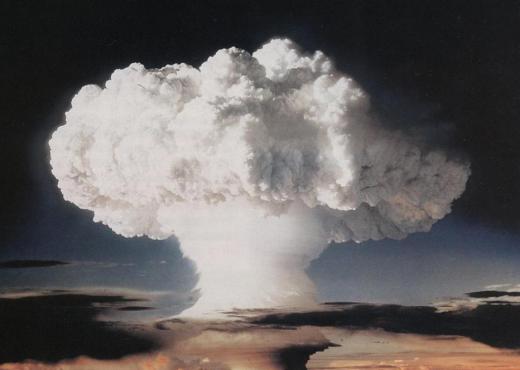What is Particle Physics?
 Michael Anissimov
Michael Anissimov
Particle physics is the study of fundamental particles and the forces that guide them. Because many of the fundamental particles only appear during relativistic collisions in particle accelerators, colloquially called "atom smashers," particle physics is also known as "high-energy physics". Physicists have been slamming together particles at extreme speeds since 1929.
The best picture of particle physics we have today is called the Standard Model, developed painstakingly in the 1970s. It was a reaction to the "particle zoo", a huge proliferation of unusual fundamental particles discovered during high-energy physics experiments in the 1950s and 1960s. The final particle count ended up to be around 31, including 24 fermions (quarks, electrons, neutrinos, and their antiparticles), 6 bosons (one of which, the graviton, has yet to be observed), and one elusive particle responsible for the property of mass itself, which also has yet to observed, the Higgs boson. Basically, the fermions make up matter and the bosons mediate interactions between matter. The light coming from your computer screen is made up of photons which are bosons. They are interacting with the fermions making up your eyeball.

Most of the matter all around us is composed of only a few fundamental particles: up quarks, down quarks, and electrons. There are also 50 trillion low-mass neutrinos streaming through our bodies every second, passing through the entire Earth almost as if it wasn't even there. Neutrinos, whose name means "little neutral particle," are so elusive that it wasn't even known that they had a mass until 1998. One of the newest areas of astronomy is known as neutrino astronomy, whereby neutrino flux from the Sun and supernovae are observed using huge detectors.
Although only a few of particles in the particle zoo make up the matter we are familiar with, particle physics gives us great insight into the structure of reality by showing us the less common variants and how they fit together into a unified family. Particle physics can be said to be responsible for the existence of nuclear power, nuclear medicine, and nuclear bombs. Particle physics is considered one of the most respected areas of science because it ends up producing insights which are useful to other areas, sort of like math.
AS FEATURED ON:
AS FEATURED ON:











Discussion Comments
Save your time and research money; the graviton does not exist.
I could tell you what creates gravity; I could tell you why it doesn't show itself the way you think it should, and that is probably why you can't figure it out. I could tell you there is no magic particle that creates gravity and yet it is particle based. You must visualize the whole cycle to understand. Surely I'm not the only one. Happy trails.
What are the modern discovery or inventions in physics?
In this article, you say 50 trillion low mass neutrinos stream through our bodies every second. What is your source for that bit of information, and also, how do you determine they 'are' low mass or whether they have 'mass' at all. If you could be so kind to tell me because I would really like to know.
Can someone tell me plans to build a simple particle accelerator?
Post your comments